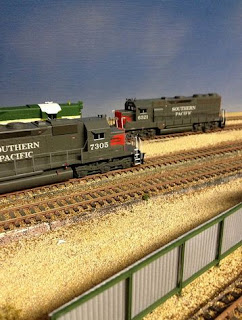You might have found similar tips around the web, but I thought I'd share this anyway.
Peco Insulfrog turnouts are a great product, and their US style code 83 track is fairly easily obtainable.
As with their (british) code 75 products, they come both as insulfrogs , and electrofrogs.
Electrofrogs can be used if you want to electrically connect the frog of the turnout, but it's not always needed, particularly with the bigger locos many US railroaders use (exceptions being track-mobiles etc).
Insulfrogs can still be improved upon. They normally rely on the moving blades to touch the stock rail , in order to supply power, but paint, ballast and other dirt can make this less reliable over time, and then your loco stalls.
The solution is simple however, and that is to solder small wire bridges to the BOTTOM of the turnout, prior to installing them on your layout.
I won't go into explaining how it works here, but rather show you a picture on how they are fitted.
It's easy to do, asuming you have a soldering iron and have some basic skills:
Step 1: get a small thin wire, strip it and tin it using some solder.
Step 2: add a tiny drop of flux to the bottom of the two rails between which the wire is placed.
Step 3: Tin the tip of your soldering iron
Step 4: place the wire in the right spot and touch both areas briefly until the solder melts (this goes pretty quick).
Step 5: cut of the excess, and optionally paint the wire to make it less visible.
That's it. The result looks like this (seen from the bottom , where you would solder it) . The arrow indicates the jumper.

































